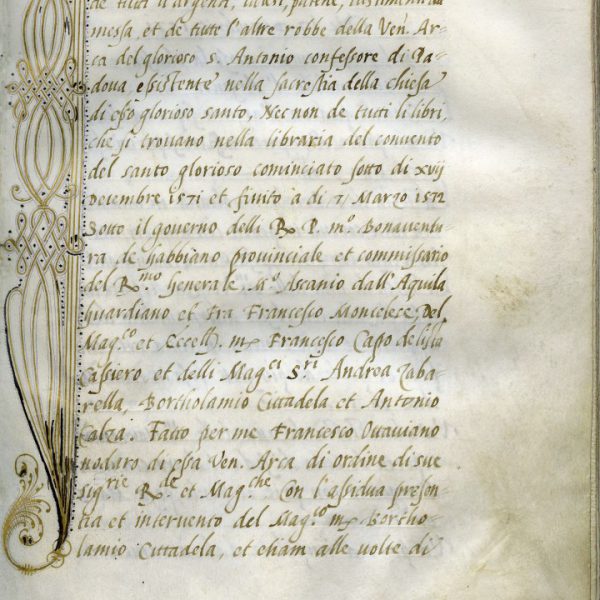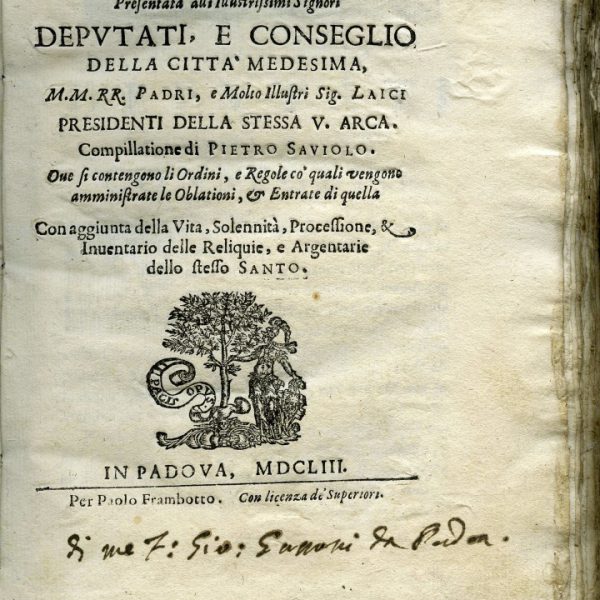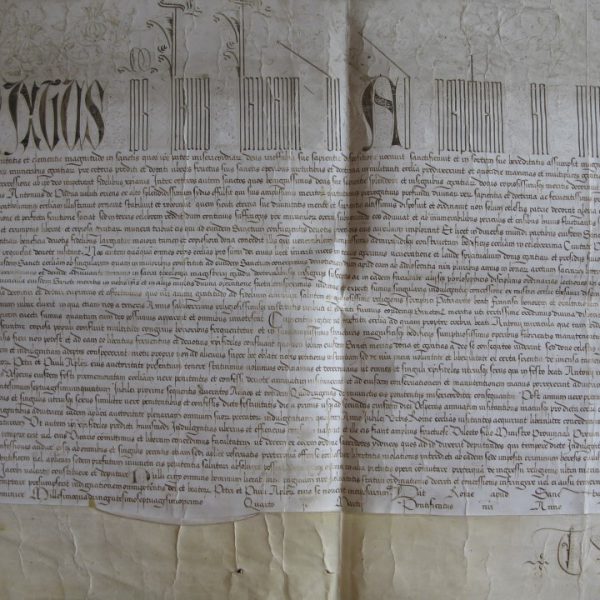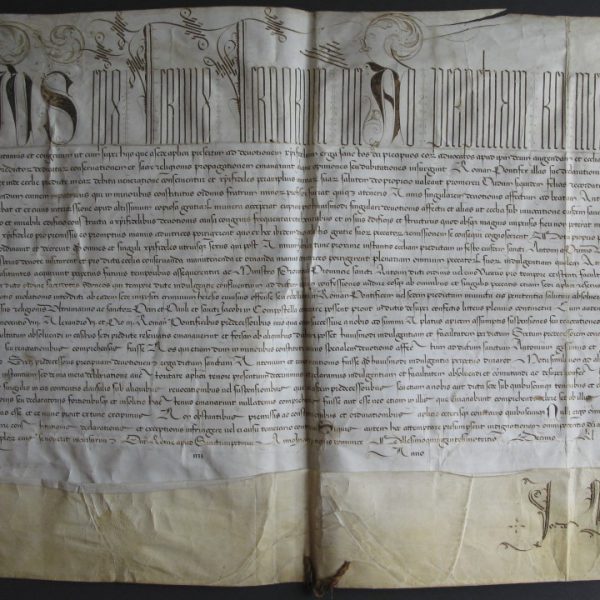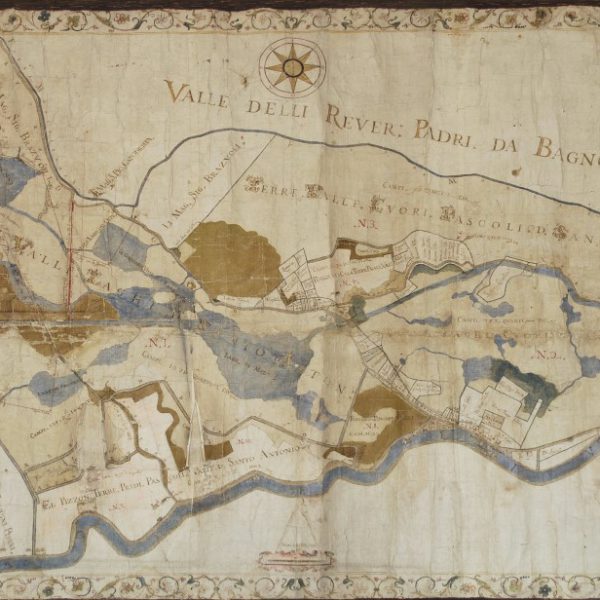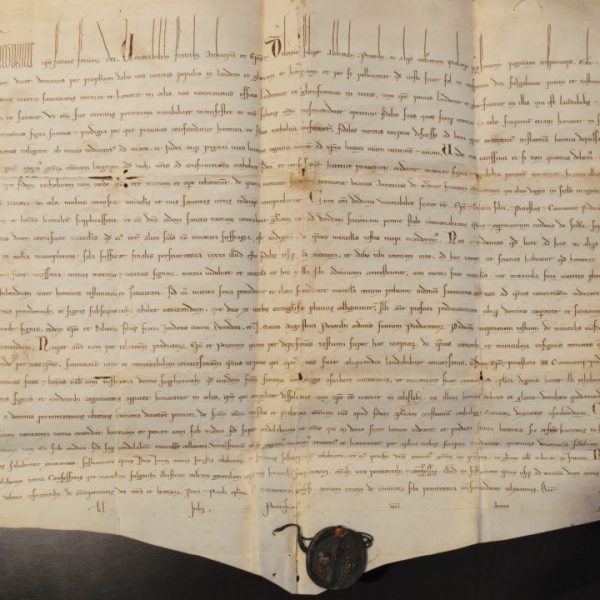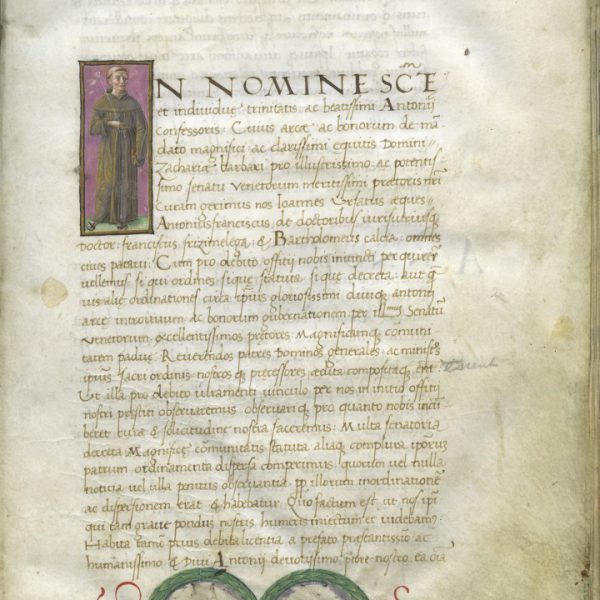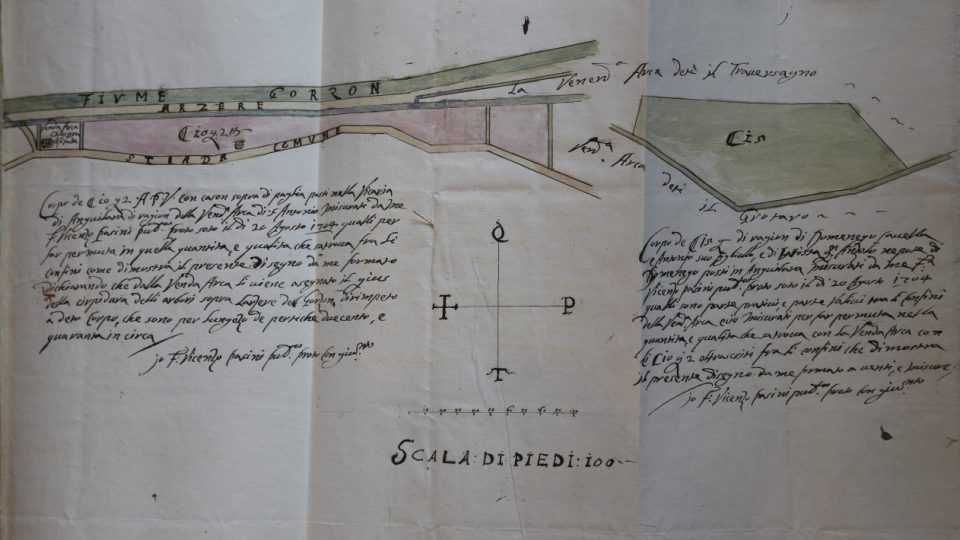The Archive of the Veneranda Arca di S. Antonio, declared of considerable historical interest by the competent archival superintendency, accurately documents 600 years of history of the complex of the basilica and the Antonian devotion, and the city of Padua and its territory, from the 14th century up to the present day. The Veneranda Arca was born as an institution, although informally, as early as the 13th century, to administer the conspicuous flow of donations coming from the faithful and the city authorities to build the basilica, following the canonization of Saint Anthony, and to manage the works. The rules of operation and the internal organization were defined in the Statutes of 1396. The Archive is the expression of the Arca’s activity, not only with respect to its nature and its tasks, but also in relation to the life of the city of Padua and its inhabitants, or immigrants, of all social classes, who for various and many reasons have been in contact with the basilica of the Saint: university professors, Venetian patricians, pilgrims and devotees, famous artists, musicians, singers and instrumentalists, scribes, accountants, notaries, librarians, archivists, workers, tenants, peasants. As a city institution, it, therefore, tells, through documents and from the perspective of the special relationship that the city has always had with the Antonian complex, a history of uninterrupted operations, relations with institutions, decisions relating to the territory, reclamation, and river embankments – especially in relation to the gastaldia of Anguillara received as a gift by the Carraresi lords -, artistic choices, constructive logics, necessities of life, both in everyday life and in the exceptional nature of the episodes that involved the most important names in the Italian art scene: Donatello, the Lombardos, Sansovino, Parodi and more. The archive consists of 64 series, which include administrative and accounting documents relating to the movable and immovable assets of the Ark and the management of the properties, the Music Chapel, the building complex, the Library, but also cartography and preparatory materials for the decorative apparatus of the basilica. After the reorganization of the Archive, a new possibility opens up for scholars: to write – or rewrite – this aspect of Paduan life, in relation to the basilica of the Saint, with the endorsement of the documents, which are now ordered and traceable, and constitute the history of the foundations and pillars.



